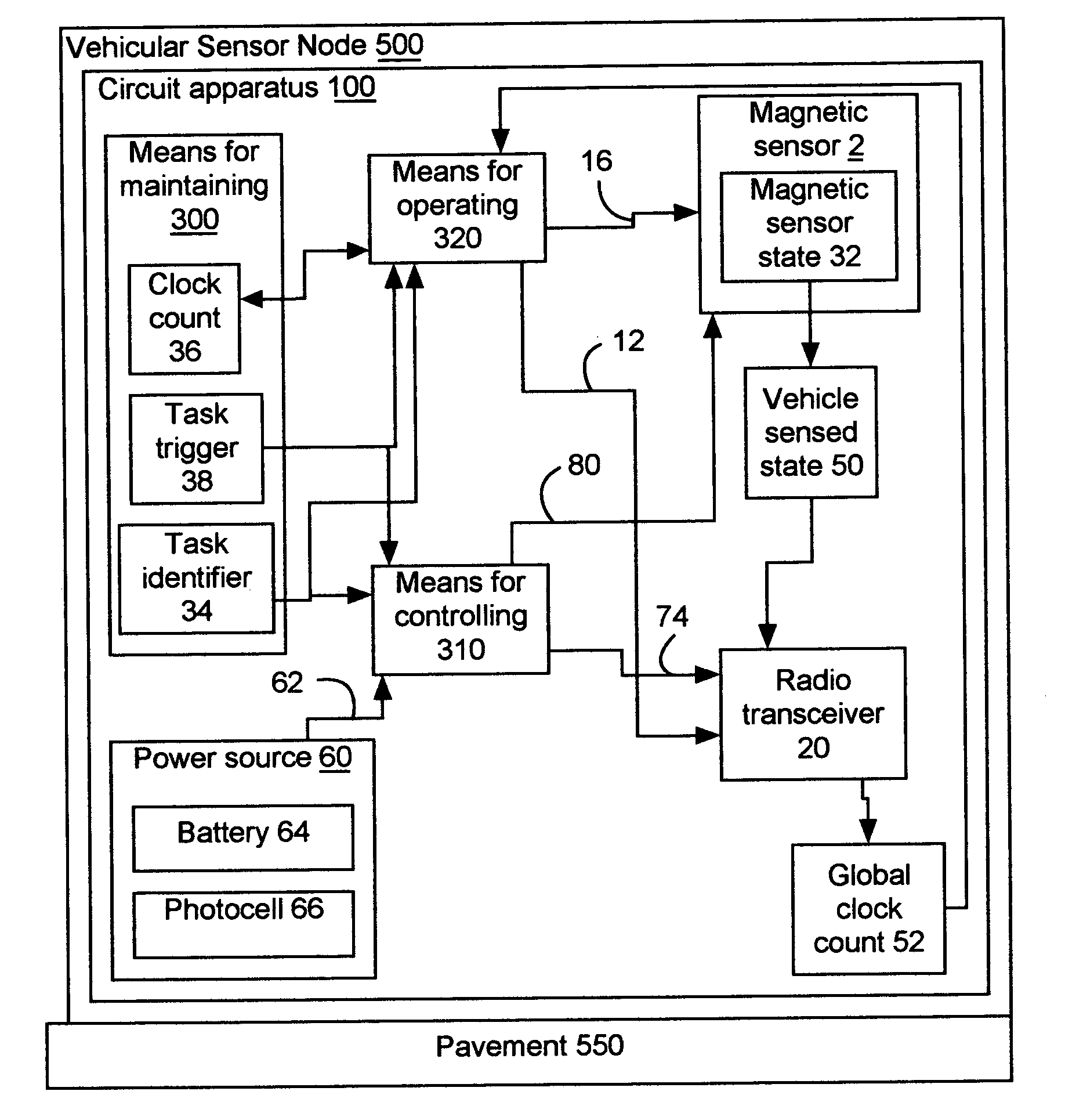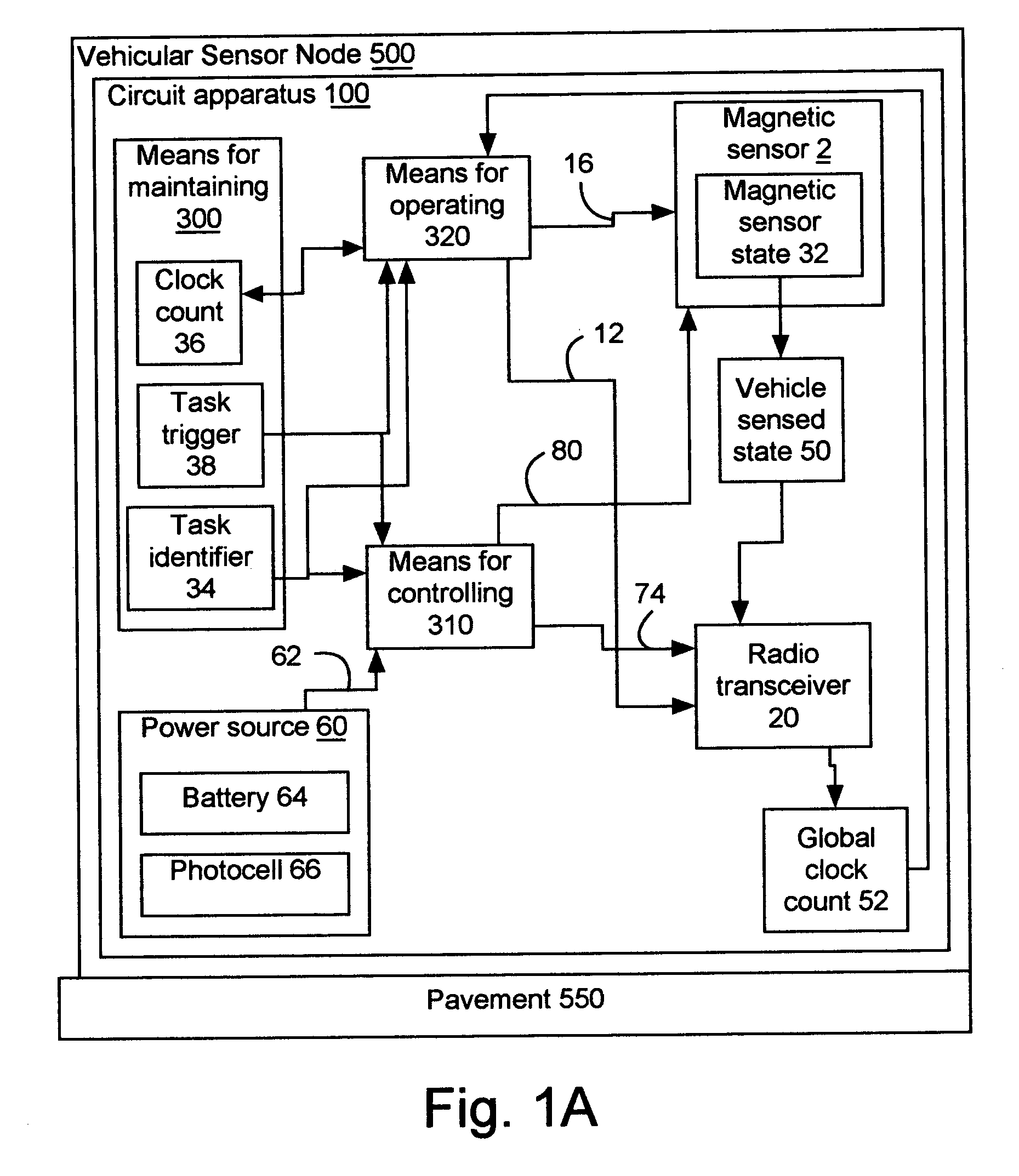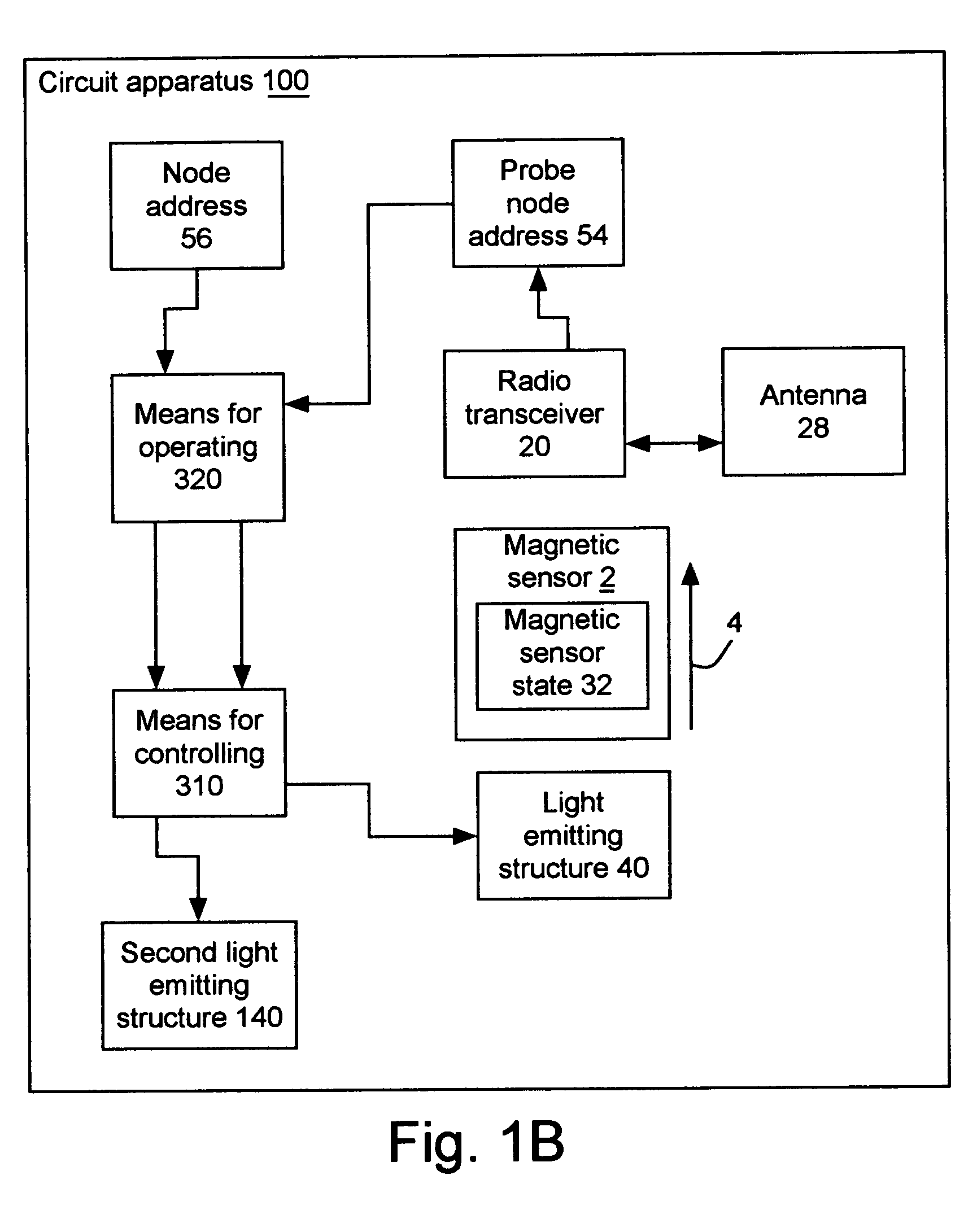Method and apparatus for self-powered vehicular sensor node using magnetic sensor and radio transceiver
- Summary
- Abstract
- Description
- Claims
- Application Information
AI Technical Summary
Benefits of technology
Problems solved by technology
Method used
Image
Examples
Embodiment Construction
[0029] The invention includes a vehicular sensor node, which is inexpensive, efficient, and reliable. The invention operates as follows: a clock count is maintained to create a task trigger and a task identifier. The power from a power source is controlled for delivery to a radio transceiver and a magnetic sensor based upon the task trigger and the task identifier. The radio transceiver and the magnetic sensor are operated based upon the task identifier, when the task trigger is active. The power source, the radio transceiver, and the magnetic sensor are enclosed in the vehicular sensor node, which is placed upon the pavement and operates for at least five years, and preferably at least ten years, without replacement of the power source or its components.
[0030] The invention as shown FIG. 1A operates as follows: the clock count 36 is maintained to create the task trigger 38 and the task identifier 34. The power 62 from the power source 60 is controlled for delivery to the radio tra...
PUM
 Login to View More
Login to View More Abstract
Description
Claims
Application Information
 Login to View More
Login to View More - R&D
- Intellectual Property
- Life Sciences
- Materials
- Tech Scout
- Unparalleled Data Quality
- Higher Quality Content
- 60% Fewer Hallucinations
Browse by: Latest US Patents, China's latest patents, Technical Efficacy Thesaurus, Application Domain, Technology Topic, Popular Technical Reports.
© 2025 PatSnap. All rights reserved.Legal|Privacy policy|Modern Slavery Act Transparency Statement|Sitemap|About US| Contact US: help@patsnap.com



